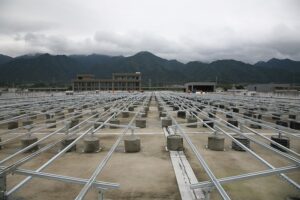
The Role of Clean Energy in Combating Climate Change
Climate change is one of the most pressing challenges of our time, threatening ecosystems, human health, and the global economy. As the evidence of climate change mounts, so does the urgency to implement effective solutions. Among the most crucial strategies to combat this global crisis is the transition to clean energy. Clean energy refers to power sources that have minimal negative impacts on the environment; they do not produce harmful pollutants or greenhouse gases when generated. This article explores the vital role that clean energy plays in mitigating climate change and how it can be integrated into our society for a sustainable future.
Understanding Climate Change
Before delving into the role of clean energy, it is important to understand climate change itself. Climate change is primarily driven by the increase of greenhouse gases (GHGs) in the atmosphere, resulting from human activities such as burning fossil fuels, deforestation, and industrial processes. These gases trap heat, leading to a rise in global temperatures. This phenomenon has various consequences, including rising sea levels, extreme weather, loss of biodiversity, and food insecurity.
According to the Intergovernmental Panel on Climate Change (IPCC), limiting global warming to 1.5 degrees Celsius above pre-industrial levels is essential to avoid the most catastrophic effects of climate change. Achieving this target requires a concerted effort to reduce GHG emissions, significantly transitioning from fossil fuels to cleaner energy sources.
The Necessity of Clean Energy
Fossil fuels—coal, oil, and natural gas—have been the backbone of global energy systems for over a century. However, their combustion releases large amounts of carbon dioxide (CO2) and other harmful pollutants into the atmosphere. In contrast, clean energy sources such as solar, wind, hydro, and geothermal emit little to no GHGs during operation. Thus, transitioning to clean energy is not merely an option; it is an essential step in addressing the climate crisis.
Types of Clean Energy
Clean energy encompasses a variety of renewable and non-renewable energy sources that aim to minimize environmental impact. Here are some prominent forms:
Solar Energy: Generated by converting sunlight into electricity using photovoltaic cells or solar thermal systems, solar energy is abundant and widely available. It reduces dependence on fossil fuels and can be implemented on a small scale (such as residential solar panels) or a large scale (solar farms).
Wind Energy: Utilizing wind turbines to convert wind kinetic energy into electricity, wind energy is clean, renewable, and increasingly cost-effective. Onshore and offshore wind farms are becoming common worldwide, providing substantial power without emissions.
Hydropower: As one of the oldest sources of renewable energy, hydropower harnesses the energy of flowing water, usually from rivers or dams. While it is renewable and capable of providing large amounts of electricity, it is crucial to balance this with the ecological effects on aquatic ecosystems.
Geothermal Energy: Geothermal energy taps into the Earth’s internal heat to generate electricity and provide heating. This clean energy form is highly efficient and has the potential for sustainable use without contributing to climate change.
Bioenergy: Derived from organic materials, bioenergy can include crops, waste products, and wood. When managed sustainably, bioenergy can serve as a clean energy source; however, it has implications for land use and food security that must be carefully considered.
The Impact of Clean Energy on GHG Emissions
Transitioning to clean energy is fundamental in drastically reducing GHG emissions. A recent report by the International Energy Agency (IEA) highlights that reaching net-zero emissions by 2050 will require a complete overhaul of global energy systems, with renewable sources contributing a significant share of energy supply. Clean energy can help mitigate the following:
Electricity Generation: Transitioning power grids away from fossil fuel-based generation to renewables leads to a remarkable decrease in electricity-related emissions. Countries that have invested significantly in solar and wind energy have seen dramatic reductions in their carbon footprints.
Transportation: The transportation sector is a significant contributor to GHG emissions, primarily due to the reliance on fossil fuels. Electric vehicles (EVs), powered by clean energy, can reduce emissions associated with driving. Additionally, investments in public transportation combined with cleaner fuels could further the transition.
Industrial Processes: Industries are often heavy consumers of fossil fuels, resulting in substantial emissions. By adopting clean technologies and energy sources, industries can lower their impact. Furthermore, innovations in energy efficiency can curtail energy usage and emissions across sectors.
Economic Benefits of Clean Energy
The benefits of clean energy go beyond environmental impacts; they have profound economic implications as well. Transitioning to clean energy can lead to job creation, innovation, and economic growth. The renewable energy sector has already seen significant employment growth, outpacing fossil fuel jobs in many regions.
Investing in clean energy can help stimulate local economies. For example, solar and wind projects often create jobs during installation and maintenance, benefiting local workers and communities. Furthermore, reducing energy costs through efficiency and renewables can save households and businesses significant amounts of money, contributing to increased spending and economic activity.
Policy and Implementation Challenges
While the benefits of clean energy are clear, several challenges must be addressed to ensure a successful transition. Policy frameworks play a critical role in promoting clean energy. Governments must implement incentives, regulations, and policies that support renewable energy development and encourage energy efficiency. This could take the form of tax incentives, grants for technology development, and regulatory frameworks that promote renewables over fossil fuels.
The transition to clean energy requires significant investment, not only in the energy generation technology but also in the grid infrastructure to accommodate distributed energy sources. Additionally, there are challenges related to energy storage, as many renewable sources are variable and require robust systems to ensure reliability.
Public perception and political will can also affect the pace of clean energy adoption. Overcoming misinformation about renewable energy and fostering an understanding of its benefits are crucial for mobilizing support and engagement among communities and stakeholders.
The Role of Individuals and Communities
While large-scale transitions to clean energy require government and corporate action, individuals and communities play an essential role as well. People can make significant contributions by adopting sustainable practices in their daily lives, such as:
Energy Efficiency: Implementing energy-efficient appliances, using public transportation, and reducing energy consumption can significantly lower individual carbon footprints.
Supporting Local Renewable Initiatives: Communities can invest in local renewable energy projects, such as community solar farms that provide clean energy to local residents. Community support can also influence local governments to adopt clean energy policies.
Advocacy and Education: Individuals can engage in advocacy efforts to promote clean energy policies and educate others about the benefits of renewable energy. These efforts can amplify support for necessary government action and shift public opinion.
The Future of Clean Energy
As we look toward the future, the potential for clean energy to combat climate change is vast. Innovations in technology, such as advances in energy storage, smart grids, and energy-efficient technologies, will further enhance the effectiveness of clean energy solutions. Increasing collaboration among governments, businesses, and communities will be essential to ensure that clean energy technologies are deployed at scale.
The path forward remains challenging, yet the case for pursuing clean energy is more compelling than ever. Achieving global climate goals will not only help combat the devastating impacts of climate change but will also pave the way for a sustainable economy, equity in energy access, and a healthier planet for generations to come.
Conclusion
In conclusion, clean energy is a crucial component in the fight against climate change. The transition from fossil fuels to renewable energy sources is not only necessary to reduce greenhouse gas emissions but also offers substantial economic and social benefits. Governments, businesses, communities, and individuals must work together to develop and implement policies and practices that prioritize clean energy. The future health and prosperity of our planet depend on our actions today. By committing to clean energy solutions, we can create a sustainable and resilient future for all.



